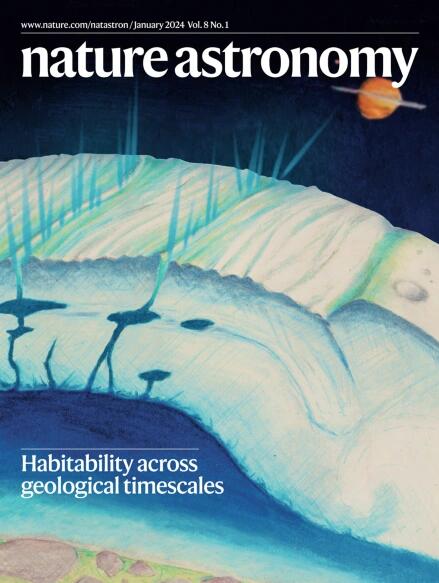Observations of fine coronal structures with high-order solar adaptive optics
IF 14.3
1区 物理与天体物理
Q1 ASTRONOMY & ASTROPHYSICS
引用次数: 0
Abstract
Resolving fine structures in the Sun’s corona may provide key insights into rapid eruptions and the heating of the corona. Adaptive optics systems have been used for over two decades to reach the diffraction limit of large telescopes, thereby compensating for atmospheric image blur. Current systems, however, are still limited to observations of the solar disk and fail with coronal objects, leaving fundamental coronal dynamics hidden in that blur. Here we present observations with coronal adaptive optics reaching the diffraction limit of a 1.6-m telescope to reveal very fine coronal details. Furthermore, we discovered a short-lived, fast-moving, finely twisted feature occurring during the decay phase of a flare that quickly destabilized. Coronal adaptive optics increased the spatial resolution by an order of magnitude at visible wavelengths. We report here a large portion of off-limb coronal rain material with observed scales below 100 km. This new adaptive optics scheme opens opportunities for observational discoveries at small scales beyond the solar limb in the highly dynamic corona by exploiting the diffraction limit of large ground-based telescopes. High-resolution observations of fine structure in the Sun’s corona hint at plasma features on the order of 10 km. A new adaptive optics system, Cona, lifts the veil of atmospheric blur over a fast-moving, twisted plasma stream as it becomes unstable.


用高阶太阳自适应光学观测精细日冕结构
解析太阳日冕中的精细结构可能为快速喷发和日冕加热提供关键的见解。自适应光学系统已经使用了二十多年,以达到大型望远镜的衍射极限,从而补偿大气图像模糊。然而,目前的系统仍然局限于对太阳圆盘的观测,并且在日冕物体上失败,使基本的日冕动力学隐藏在模糊之中。在这里,我们展示了日冕自适应光学达到1.6米望远镜衍射极限的观测结果,以揭示非常精细的日冕细节。此外,我们还发现了一个短暂的、快速移动的、精细扭曲的特征,发生在一个迅速不稳定的耀斑的衰变阶段。日冕自适应光学在可见光波段提高了一个数量级的空间分辨率。我们在此报告了观测尺度在100公里以下的大部分离翼日冕雨物质。这种新的自适应光学方案通过利用大型地面望远镜的衍射极限,为在高动态日冕中太阳边缘以外的小尺度观测发现提供了机会。
本文章由计算机程序翻译,如有差异,请以英文原文为准。
求助全文
约1分钟内获得全文
求助全文
来源期刊

Nature Astronomy
Physics and Astronomy-Astronomy and Astrophysics
CiteScore
19.50
自引率
2.80%
发文量
252
期刊介绍:
Nature Astronomy, the oldest science, has played a significant role in the history of Nature. Throughout the years, pioneering discoveries such as the first quasar, exoplanet, and understanding of spiral nebulae have been reported in the journal. With the introduction of Nature Astronomy, the field now receives expanded coverage, welcoming research in astronomy, astrophysics, and planetary science. The primary objective is to encourage closer collaboration among researchers in these related areas.
Similar to other journals under the Nature brand, Nature Astronomy boasts a devoted team of professional editors, ensuring fairness and rigorous peer-review processes. The journal maintains high standards in copy-editing and production, ensuring timely publication and editorial independence.
In addition to original research, Nature Astronomy publishes a wide range of content, including Comments, Reviews, News and Views, Features, and Correspondence. This diverse collection covers various disciplines within astronomy and includes contributions from a diverse range of voices.
 求助内容:
求助内容: 应助结果提醒方式:
应助结果提醒方式:


